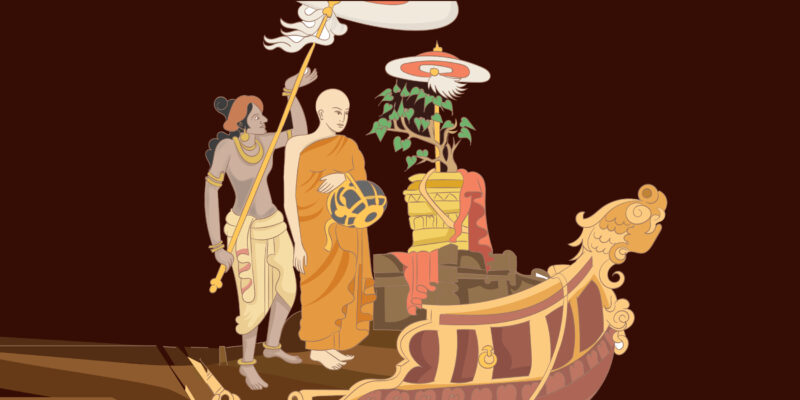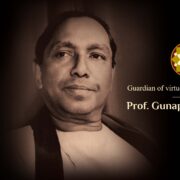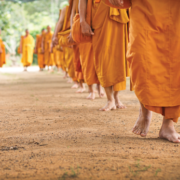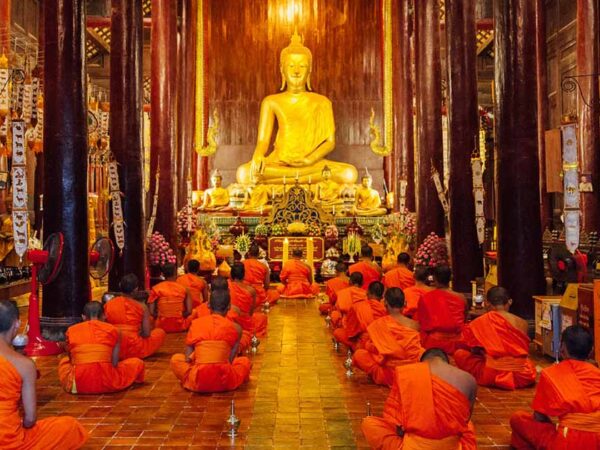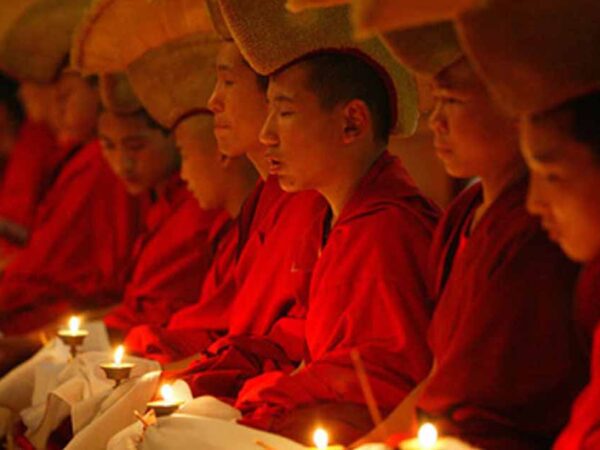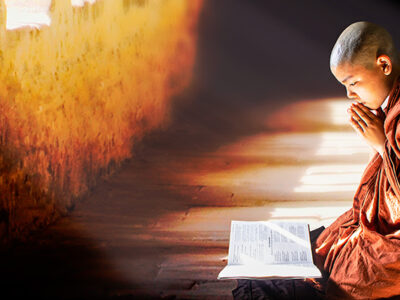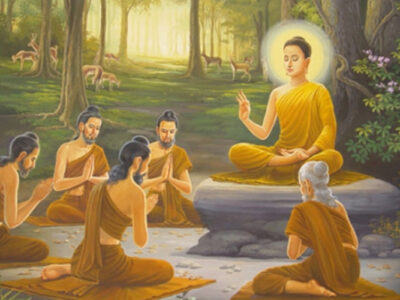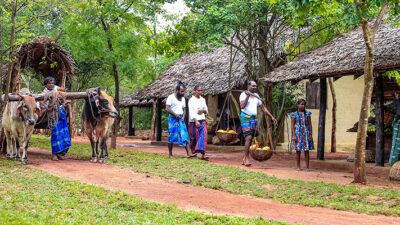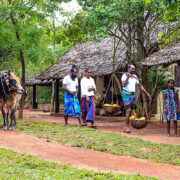By Vishva Keerti Sri Sasana Sobhana Tripitakacharya Most Venerable Piyadassi Maha Thera
The Unduwap full moon day falls on December and to the Buddhist of this island it is a day of sacred memories in view of its unforgettable association with an emperor’s daughter, a noble lady of great self-sacrifice and deep religious fervour, who came to this island and dedicated her life for the weal and happiness of the people especially the womenfolk of the country.
She is none other than the Arahat Theri Sanghamitta. The daughter of Emperor Asoka of India and the sister of Arahat Mahinda Thera who introduced Buddhism to Ceylon in the 3rd century BC on a full moon day of June. (Poson)
URGE FROM WOMEN
When Arahat Maha Mahinda had planted the faith in this country and constituted Bhikkhu Sangha, the order of monks, there came the urge from the womenfolk to enter the order of nuns, the Bhikkhuni Sangha. The story behind the strong desire is told in the chronicles and the vinaya commentary samantapasadika. Maha Mahinda an able exponent of the clear worded exposition of the Buddha. delivered many inspiring discourses. He instructed on lightened and gladdened both the King and the commoner. People in large numbers sought refuge in the Buddha, Dhamma and the Sangha. The members of the royalty, too, were there to listen to his illuminating sermons which were all new to them, for they had not hitherto heard the word of the Buddha. Queen Anula, the consort of an uparaja Mahanaga with 500 of her attendant ladies having listened to the discourse gained mental attainments and implored Arahat Mahinda to grant them ordination. The Venerable Maha Mahinda suggested to King Tissa that his sister Sanghamitta, who was then a Bhikkhuni in India, be invited to Sri Lanka for bestowing ordination on those desirous of it and thus establish the Bhikkhuni order in Sri Lanka.
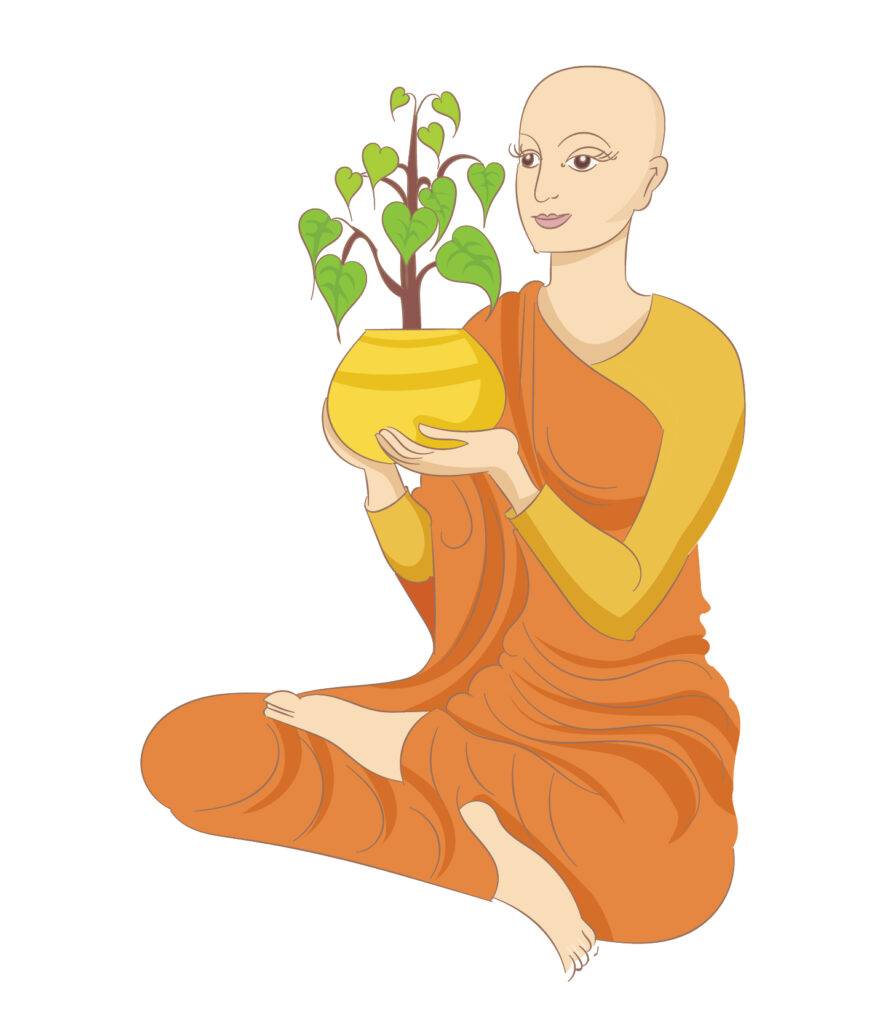
King Devanampiyatissa, glad at heart made all arrangements to dispatch
a deputation headed by Aritta, one of his ministers, to Emperor Asoka intimating to him the wish of Maha Mahinda and himself. When the deputation conveyed this message, Emperor Asoka was overcome by grief over losing also his daughter when his son, too, had left him and the country. Emperor Asoka was not an Arahat, a perfect one, who had eradicated all personal attachments and it was in accord with human nature that he tried to dissuade his daughter from leaving him. Sanghamitta theri however, consoled father by explaining to him that the request had come from her noble brother and that she would have the rare opportunity and good fortune to establish Bhikkhuni order in Sri Lanka.
The Emperor agreed as requested by Arahat Mahinda suggested that she take with her a sapling of the Sri Maha Bodhi tree under whose shelter the Bodhisatta Gautama gained full enlightenment. A sapling from the southern side of the tree was obtained and Emperor Asoka made all arrangements for Theri Sanghamitta to take it to Sri Lanka in the company of eleven Arahat Bhikkhunis.
ORDER OF BUDDHIST NUNS
Theri Sanghamitta made the Upasika Vihara a nunnery within the city, her abode. After the planting of the Bodhi sapling and the ceremonies connected with it were all over. Anula and her women were ordained and the Bhikkhuni order was set up under the able guidance and leadership of the Arahat Theri Sanghamitta. The Bhikkhuni order thus established flourished in this country for several centuries. History tells us that Sinhala Bhikkhunis headed by Bhikkhuni Devasara even sailed too far away from China and established the Bhikkhuni order in that country during the time of Yuan Chia (429 ACE)
Their Sanghamitta gave ordination not only to Princes Anula and members of the royalty and higher strata of society, but all irrespective of her standard in society.
Women from all walks of life joined the order. Following in the footsteps of the Buddha who treated women with consideration and civility and pointed out to them too. The path to peace, purity and sanctity.
Theri Sanghamitta did all in her power to raise womenkind from lower to higher levels of life. She worked with unflagging devotion and undaunted courage for the moral intellectual and spiritual uplift of the womenfolk of this country.
Buddhism make no distinction of sex with regard to doctrinal matters. All follow the same doctrine and discipline set forth by the Buddha. All irrespective of sex, caste or colour, can reach the higher attainments found in Buddhism provided they follow the path pointed out by the Master, namely the Noble Eightfold path which is Buddhism in practice.
UNIQUE BROTHER AND SISTER
By her saintly character and virtue, her compassion and conscientiousness and service for the religion. Theri Sanghamitta endeared herself to the people of this country. Like her brother Maha Mahinda she stands a vivid and notable figure, In the annals of history there never was an instance of a brother and sister dedicating themselves to the task of a spiritual ministration abroad with so deep a devotion and such far reachings results as Arahat Mahinda and Theri Sanghamitta.
The Theri Sanghamitta passed away at the age of seventy-nine, while she dwelt in the peaceful Hatthalaka nunnery. Her funeral was performed by King Uttiya with honour and proper solemnity at a spot not far from the Bodhi-tree. A monument in her honour was built. It is interesting to note that almost all authors who wrote about Sri Lanka never forgot to make a reference to the Jayasiri Mahabodhi at Anuradhapura. H.G.Wells the renowned historian observes.
In Sri Lanka there grows to this day a tree, the oldest historical tree in the world. Which we know certainly to have been planted as a cutting from the Bo Tree in the year 245 BC. From that time to this, it has been carefully tendered and watered. Its great branches are supported by pillars.
It helps us to realize the shortness of all human history to see so many generations spanned by the endurance of one single tree. Fahien, the Chinese monk and traveller, who visited Sri Lanka in the fifth century after Christ and spent two years at the Mahavihara, Anuradhapura, saw the tree in vigorous health and makes mention of it in hois records.
Dr. Rhys Davids and Emerson Tennent give detailed accounts of the Bodhi Tree. Our own Dr. Paul Pieris Deraniyagala writes. It is doubtful if any other single incident in the long history of their race has seized upon the imagination of the Sinhalese with such tenacity as this of the planting of the aged tree. Like its pliantroots, which had sustenance on the face of the bare rock and cleave their way through the stoudest fabric. The influence of what it represents has penetrated into the innermost being of the people till the tree itself has become almost human, and even now on the stillest night, its heart-shaped leaves on their slender stalks ceaselessly quiver and sigh as they have quivered and sighed for twenty-three centuries.

